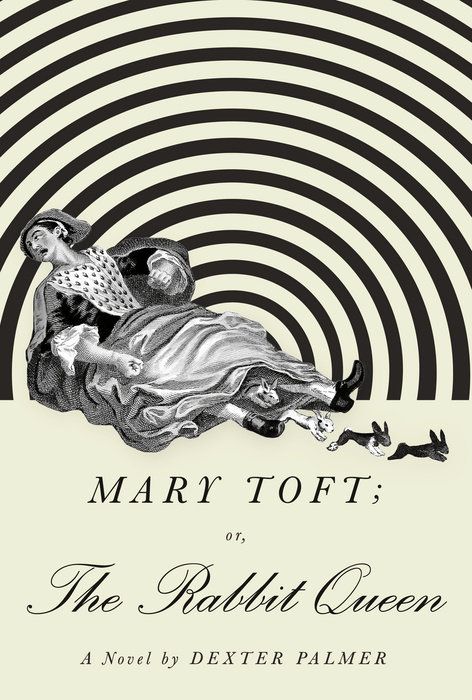
Three novels in to his career, I think it’s safe to say that Dexter Palmer’s work can be sorted alongside the likes of Rupert Thomson, Ali Smith, and David Mitchell — which is to say, of writers who essentially reinvent themselves from book to book. Palmer’s latest novel, Mary Toft; or, The Rabbit Queen, is set in 18th-century England. It’s as different from his previous novel, the heady time-travel novel Version Control, as Version Control was from its predecessor, the disquieting steampunk narrative The Dream of Perpetual Motion.
To the extent that these novels do have a shared quality, it’s in the way they address situations in which science is presented with an insurmountable problem. In Version Control, whose plot hinges upon a device that is for all intents and purposes a time machine, that was the most clear manifestation of it. But that clash of scientific reasoning with the theoretically impossible is also at the heart of Mary Toft.
The premise is disarmingly simple (and based on real events, as it turns out). The year is 1726. Zachary Walsh is the young apprentice to a doctor, John Howard, in a small English town. There, a woman named Mary Toft has begun speaking of bizarre dreams, and subsequently giving birth to dead rabbits. Strange? Yes. Supernatural? Possibly.
It’s a question that puzzles both John and Zachary — and, as word of Toft’s condition spreads, baffles the more famous physicians dispatched from London to see this medical anomaly for themselves. All of which prompts plenty of educated guesses as to what’s actually happening, explanations which can sound as strange as the phenomenon they’re describing, as with this quote from John:
“Either there will be too many legs, or not enough, or no head, or some other irregularity. As if the making of offspring requires a kind of instinctive knowing, of the body rather than the mind; and in her instance the knowledge required to bring such creatures into existence is misremembered, or not entire.”
But Palmer isn’t illuminating this corner of history to simply explore a weird event that took place hundreds of years ago. As Mary’s strange births become more and more of a media sensation, Palmer uses this element of this novel to explore questions of celebrity and veracity. And by the time John and Zachary relocate to London, and Zachary gets a firsthand glimpse of a decadent elite and warring groups of opera fanatics — among others — the scope of the novel opens up dramatically.
Throughout Mary Toft, Palmer makes use of stories embedded within the larger story, from folk tales to stage performances to medical records. And ultimately, that turns out to be central to the nature of why Palmer’s story resonates deeply with the present moment: it’s all about narratives, and who finds them compelling, and who controls them. In telling John and Zachary about her condition, Mary imparts a particular narrative to them; as more medical professionals become involved, the discussions of what could be happening to her become increasingly central, crowding Mary out of her own story.
Clearly, Palmer is aware of this — and it’s not for nothing that Mary Toft being marginalized in a novel called Mary Toft feels all too relevant to life in 2020. With its strains of populist narratives and Georgian mansplaining, there are numerous echoes of contemporary life — though this element of the novel never feels heavy-handed. One can read Mary Toft as Dexter Palmer’s exhumation of the past to cast aspersions on the present, or one might view it as more of a historical narrative with a more subdued contemporary echo. Either way, it pulls off the impressive feat of simultaneously evoking a long-gone time and place and addressing a very contemporary kind of urgency. Where will Palmer’s work take him next? I have no idea, but it’s likely to be fascinating.
***
Mary Toft; or, The Rabbit Queen
by Dexter Palmer
Pantheon; 320 p.
Follow Vol. 1 Brooklyn on Twitter, Facebook, and sign up for our mailing list.
